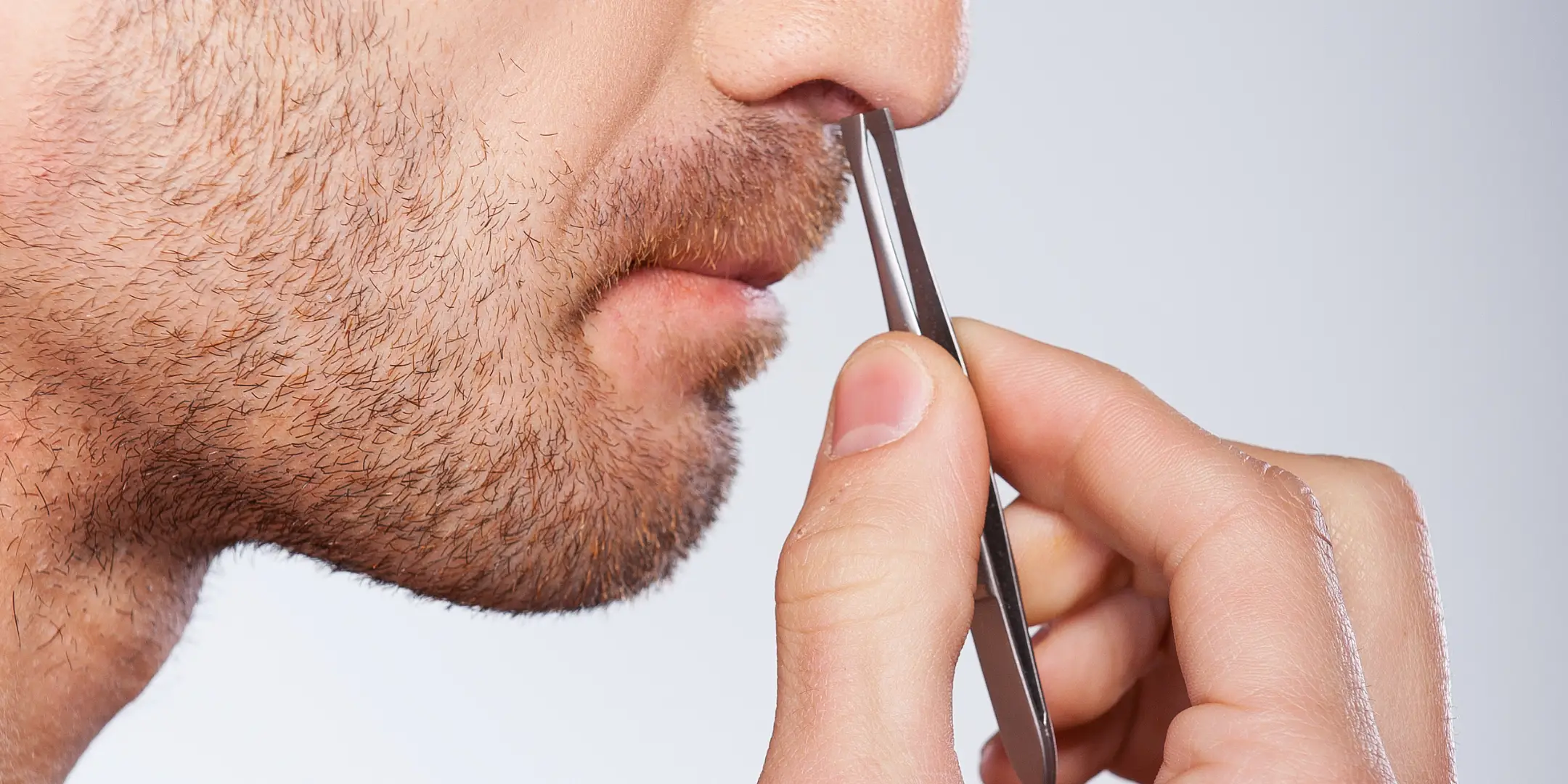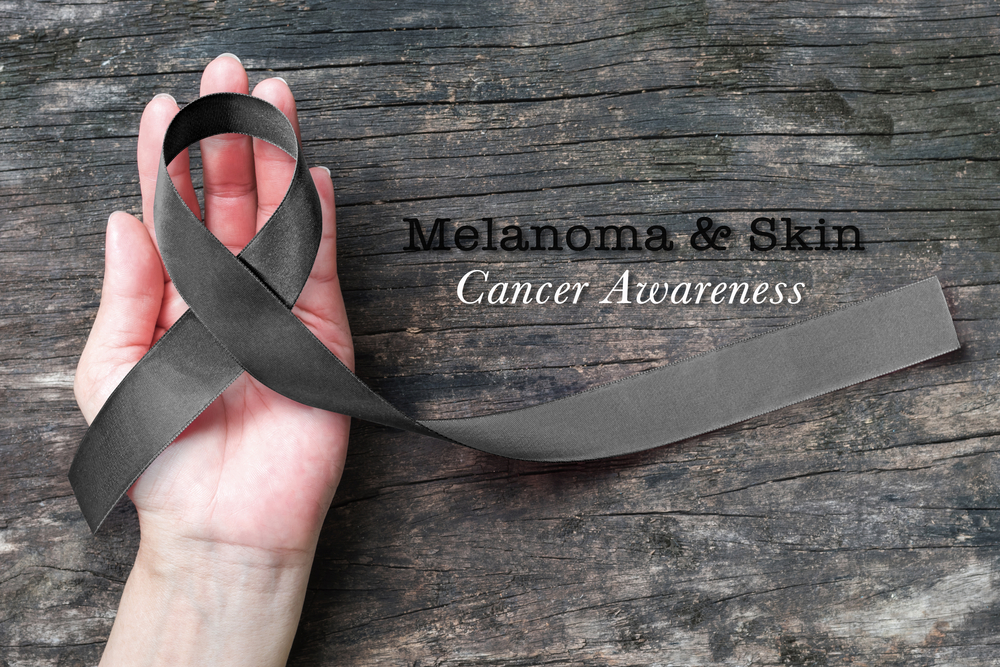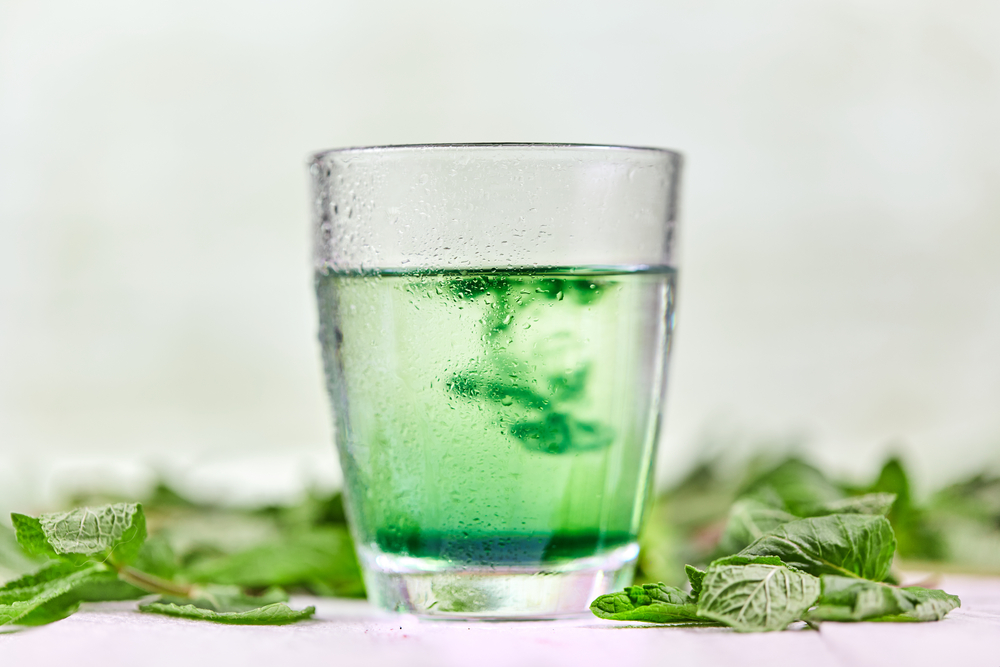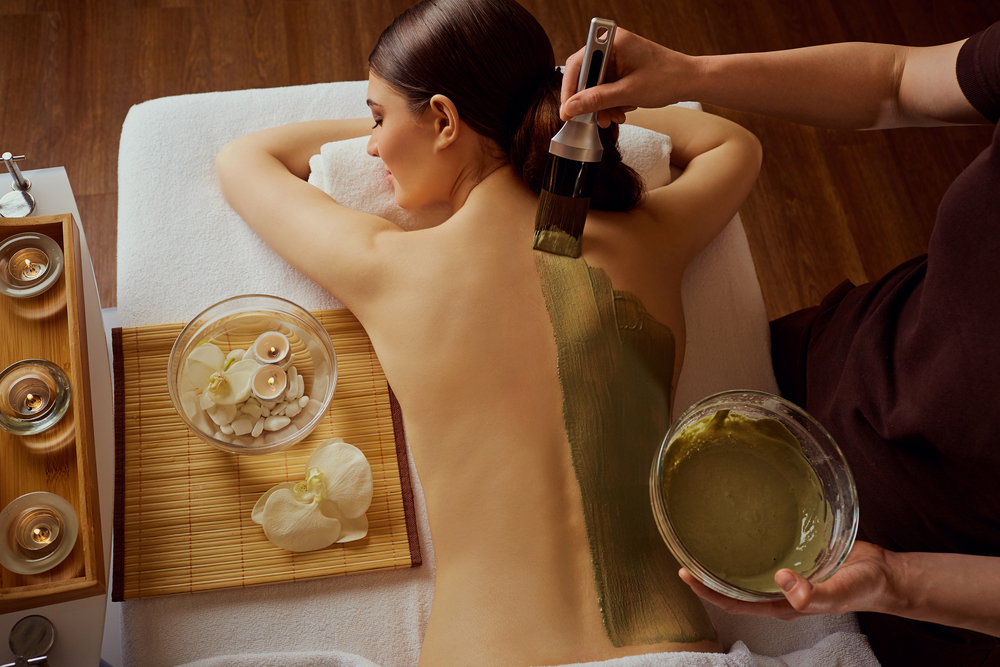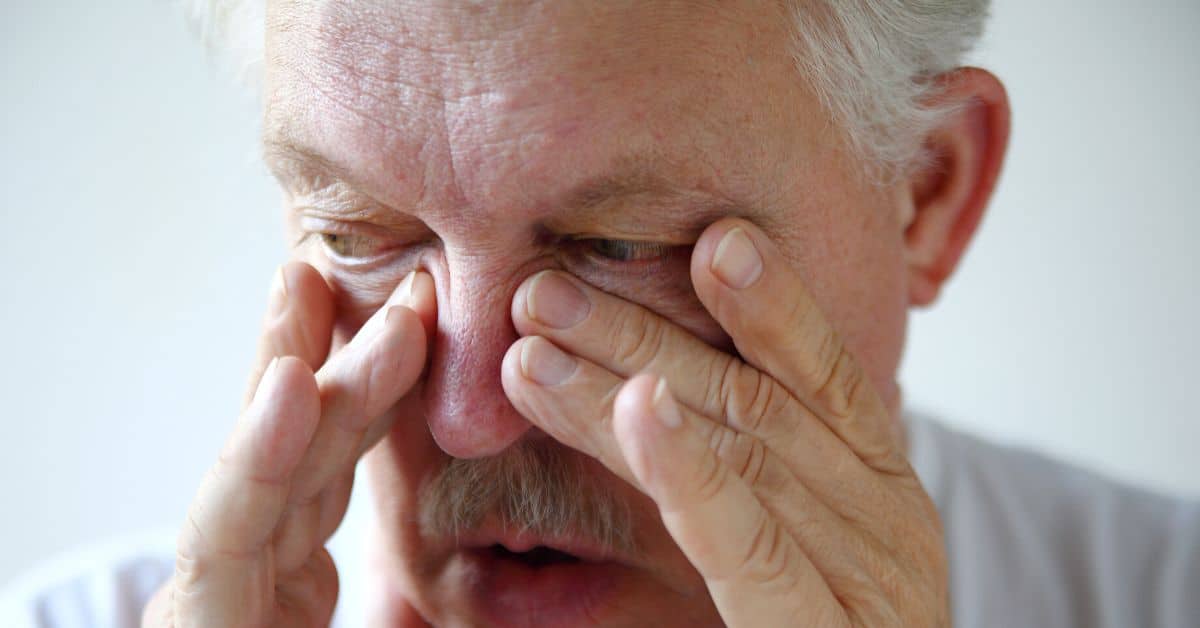Ingrown nose hair can be a frequent and bothersome issue. In addition to being unpleasant, it can be embarrassing in addition to being painful. You don’t have to put up with ingrown nose hairs if you’re sick of dealing with them; there are efficient techniques to remove them and stop them from returning.
We’ll go over why ingrown hairs occur as well as how to safely and effectively get rid of them. So continue reading if you’re ready to say goodbye permanently to ingrown nose hairs!
How Does An Ingrown Nose Hair Feel?
An ingrown hair can cause irritation or a sense of discomfort both inside and outside of the nose. You may feel or see a pimple-like appearance, bump, or a small protrusion; it can sometimes be sore to the touch. Some people may also have pain or tenderness in the surrounding areas of the ingrown hair.
Generally, people who remove hairs through waxing, shaving, or tweezing may encounter ingrown nose hair internally or externally. These methods can sometimes leave hair fragments under the skin, and these might sometimes grow inwardly, resulting in ingrown hair.
Often, the ingrown hair may be visible inside the nose as a small bump but without any noticeable symptoms. However, some individuals might experience redness, swelling, and discharge from the ingrown hair site if it gets infected.
Largely, the ingrown nose hair resolves by itself within a few days and wouldn’t require any specific measures to treat it or a doctor’s visit. In some instances, it can become a chronic issue. Some individuals may experience frequent eruptions of these bumps with severe symptoms and may need medical attention to resolve their concerns.
It is also important to remember if you have any itchy feeling or bumps inside your nose, you mustn’t pick it up or try to remove it yourself without much knowledge. Instead, try the techniques mentioned below or consult a healthcare professional for assistance.
Can You Pluck Your Ingrown Nose Hair?
Nope. You shouldn’t pick, scratch, or try to pop the ingrown nose hair. Doing so may increase the risk of infection or complicate it further.
It is generally not advisable to dig or pluck your ingrown nose hair. The plucking process can be difficult, and doing so can cause you pain and irritation. The skin inside the nostril is very thin and delicate. If you attempt to pluck or pop ingrown hair, you might end up damaging the hair follicle or tearing the skin, thus resulting in the spread of infection and the formation of more ingrown hairs in the future.
Furthermore, introducing foreign objects such as needles, scissors or tweezers may also increase the risk of infection since the nostrils contain pathogenic bacteria, such as the Staphylococcus species.
Nevertheless, if you see ingrown nose hair lying on the skin’s surface and can easily access it, it is generally safer to use a pair of sterile scissors to trim off the hair at the base than trying to pluck it. This approach will help reduce the risk of infection and irritation and prevent the regrowth of ingrown hair. You may also use sterile tweezers to gently remove or coax the ingrown hair if you cannot trim it.
On a cautious note, if the ingrown hair is deeply located inside the nose and has symptoms of discomfort, you should seek the help of a medical professional who may have adequate training and the tools to remove it safely.
Home Remedies To Remove Ingrown Nose Hair
Several at-home remedies can relieve the symptoms that go along with an ingrown nose hair while it heals. Among the natural treatments that you can try for ingrown nose hairs include:
Basic Skin Care And Hygiene
To reduce the risk of a blocked pore or bacterial infection, avoid touching, digging, or picking the inside of the nose. Furthermore, it may result in scarring.
Avoid blowing your nose too hard because this might spread infections and exacerbate pain and suffering.
Don’t share your towels with others since doing so might increase the risk of spreading the infection to others.
Warm Compresses
Applying a warm and damp compress on the affected area can assist in softening the skin and make it simpler to remove the ingrown hair. It will also help reduce pain and discomfort.
You might have to apply warm moist compresses inside the nose two or three times a day, depending on the location and the severity of the symptoms.
OTC Pain Medications
If you cannot bear the pain, you may try taking over-the-counter medications to relieve the pain. Some common pain relievers include Aleve, Tylenol, and Advil.
Natural Antiseptics
Topical antiseptic emollients and oils can also provide pain relief, including:
- Tea Tree Oil: This oil has antibacterial qualities that may assist in lowering the risk of illness. Apply tea tree oil to the affected region with a cotton swab after diluting it with water or carrier oil like coconut oil.
- Aloe Vera: A succulent plant species with anti-inflammatory and soothing properties that can assist the skin – using a cotton swab, dab some aloe vera gel onto the troublesome area.
- Honey: Honey is antibacterial and can help lower the risk of infection. Use a cotton swab to apply a small amount of honey to the ingrown hair.
Exfoliating Agents
Use gentle exfoliating agents like saline solution or OTC products to assist in loosening and getting rid of ingrown hairs on the area surrounding your nose. Don’t use it inside your nostrils since it might irritate and cause damage to the delicate skin.
Hydrogen peroxide may also help get rid of ingrown hair. Dilute hydrogen peroxide and apply it to the affected area. Be cautious not to inhale or put it inside your nose.
It is crucial to be cautious when applying these treatments and to refrain from picking at or removing the ingrown nose hairs because doing so might harm the skin and raise the possibility of infection. It could be important to seek medical assistance if the ingrown hair doesn’t go away after using these remedies or if you have numerous ingrown hairs.
Surgical Options To Treat Ingrown Nose Hair
You might need to seek the assistance of a healthcare provider if you have several ingrown nose hairs or if you are unable to get rid of them on your own after a certain period of time.
Initially, your doctor would prescribe antibiotics, steroids, and retinoid creams to curb infection, reduce inflammation, and boost dead skin cell turnover. If the ingrown nose hair doesn’t heal with this initial treatment, one of the following may be suggested:
- Laser: The hair follicles can be destroyed by laser hair removal to stop the development of new hairs. Although this procedure is typically short and painless, the intended effects might only be seen after several sessions.
- Electrolysis: To kill the hair follicles and stop the formation of new hairs, electrolysis uses an electric current. This procedure can be useful for getting rid of ingrown hairs but is typically slower and might be more unpleasant than laser hair removal.
- Surgical Removal: A healthcare expert may occasionally need to remove ingrown hairs medically. To do this, a small incision in the skin may be made, and the hairs may be plucked out using tweezers or another tool.
Before choosing a course of therapy, it is crucial to consider the pros and cons of these treatments with a medical specialist. In order to assist you in making a well-informed decision, they will be able to suggest the best alternative for your particular needs.
When To See A Doctor?
If you are unable to remove an ingrown nose hair on your own, if you have numerous ingrown hairs, or if you suffer any of the following signs, you should consult a physician:
- Causing pain or discomfort
- The area around the ingrown hair is red, swollen, or discharge-filled
- Restricting your airway or making it difficult for you to breathe
- The ingrown hair does not go away, or if you feel symptoms even after attempting home remedies
You must treat ingrown nasal hairs immediately to avoid complications and ensure they don’t lead to other issues. A medical expert will be able to identify what is causing the ingrown hairs and suggest the best course of action.
Pro Tips To Prevent And Treat Ingrown Nose Hair
Symptoms of ingrown nose hair can be debilitating, and following professional recommendations may help you to prevent and manage the ingrown nose hairs.
- Use clippers or scissors as opposed to a nose hair trimmer. With these instruments, you can cut more precisely, and hair is less likely to be forced back into the skin.
- Trim the nose hair at the base, just above the nostril. The risk of ingrown hairs can increase if you trim your hair too short.
- After softening with warm water, carefully remove the hair with tweezers.
- Use a saline nasal spray or saline solution to wash your nose to keep the inside of your nose clean.
- To assist in softening the skin and relieving irritation, apply a warm compress to the problematic region.
- Avoid picking or scratching ingrown nose hairs, as this can irritate the area and exacerbate the issue.
- Consult a dermatologist or other healthcare provider if ingrown nasal hair is causing you a lot of trouble. They might be able to provide more options for treatment.
Remember that these are basic advice since each person’s skin is unique and may require different maintenance. If the condition persists or gets worse, see your doctor.
Other Causes That Can Mimic Symptoms Of Ingrown Nose Hair
A few additional conditions that might mirror the signs of ingrown nasal hairs include:
- Folliculitis: Folliculitis happens when an inflamed hair follicle, usually brought on by a bacterial infection, develops. Some symptoms are itching or burning in the affected area, clusters of red bumps or pimples that may erupt or create a crust, soreness, or tenderness.
- Pimples: The accumulation of oil and dead skin cells in your pores causes a pimple to form. Whiteheads, blackheads, pustules, and cysts are only a few of their many variations. The color, sensitivity, and pain of pimples and cysts might vary.
- Furuncle: An abscess that develops deep inside a hair follicle on the nose or elsewhere is known as a nasal furuncle. A crimson, bloated, fluctuant lump is the typical visual indicator of an abscess. They usually result from a bacterial infection and are characterized as an infected pus-filled pocket under the skin.
- Nasal Polyps: These are little growths that develop on the mucous membranes of the nasal passages. They may result in nasal obstruction, olfactory loss, and nose pressure.
- Foreign Body: An occasional foreign body in the nose, such as a bead or a piece of food, can cause nasal congestion, pain, and breathing difficulties.
Seeking a medical diagnosis, looking for symptoms that are not normally linked to ingrown nose hairs, and eliminating other potential reasons through diagnostic testing or inspection are a few approaches to figuring out if the problem is something other than ingrown nasal hairs.
If you have any doubts, it’s also crucial to think about visiting a medical professional for a suitable diagnosis and treatment.
FAQs
A: Yes. In most cases, ingrown hair inside the nose heals itself with just a few simple measures. However, some cases may warrant a medical professional’s intervention.
A: It might take about one or two weeks for the ingrown nose hair to heal with just some mild symptoms.





